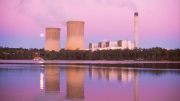 It’s a normal day in Shenyang. Almost. Last Sunday the levels of poisonous airborne particles (known as PM 2.5) reached 1,157 micrograms per cubic metre – the safe level is 25, according to the World Health Organization.
It’s a normal day in Shenyang. Almost. Last Sunday the levels of poisonous airborne particles (known as PM 2.5) reached 1,157 micrograms per cubic metre – the safe level is 25, according to the World Health Organization.
“As far as we are aware of the data we have been observing over the past few years, this is the highest ever in the country”, Greenpeace campaigner Dong Liansai told AFP.
Such a negative record is what was needed to pursue Cop21 cause and support claims that situation is even worse than depicted. No Climate Change advocate could have done a better job. The recent US-China agreement was widely welcomed as a u-turn on Beijing environmental approach, whose beneficial effect would go far beyond the Chinese borders.
Some enthusiastic comments pictured China as a new trend setter due to its large investment in renewables sources of energy. But leaving the fossil fuels out of the energy mix is a long process. Not a straight line. Relying on fossil fuels is still financially a more viable option than renewables. And this is the key argument that makes them the easiest choice for any government of any developing country, not only Beijing, whose primary urgency is to tackle poverty and enhance economic growth. Like it or not environmental issues are second best on any government agenda. Often they do not even enter into the (decisional) equation. Paris will acknowledge it. ONE






Be the first to comment on "Smog on the Water"